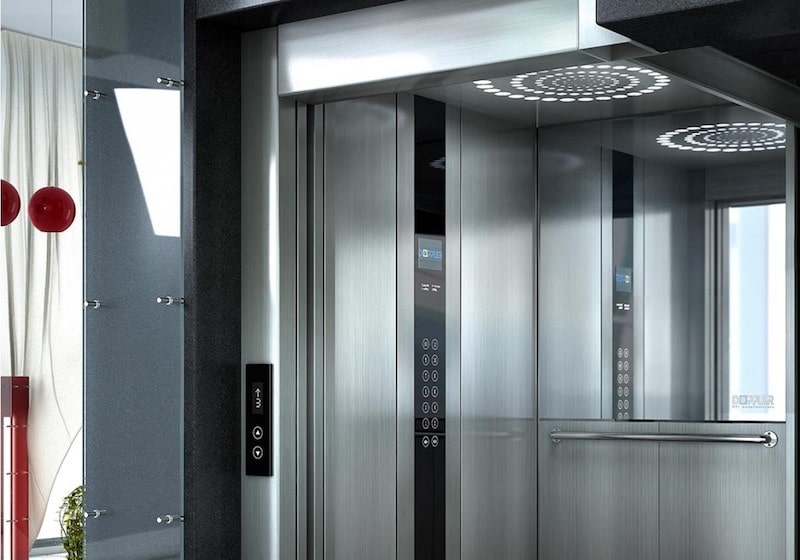London Lift Company: Trusted Professionals for All Your Upright Transportation Requirements
London Lift Company: Trusted Professionals for All Your Upright Transportation Requirements
Blog Article
Exploring the World of Lifts: Common Concerns Dealt With by Numerous Lift Systems
As we browse through the vertical transportation systems of contemporary structures, lifts stick out as a crucial component of our lives. Nevertheless, behind their smooth procedure exists a globe of detailed systems that can often experience difficulties. From hydraulic elevators to grip systems and machine-room-less layouts, each lift type includes its collection of typical concerns. Understanding these difficulties is essential for ensuring the smooth performance of these vital systems. Let's explore the complexities that underlie the operation of lifts and the prospective issues that can emerge, dropping light on the detailed web of lift devices.
Hydraulic Elevators
Hydraulic elevators, usually preferred for low-rise structures, make use of fluid pressure to regulate the activity of the elevator car (lift repair companies). This system entails a hydraulic pump pressing oil right into a cylinder, causing the elevator to relocate in the wanted instructions. While hydraulic lifts are understood for their smooth and quiet operation, they do feature their very own collection of usual problems
One common problem with hydraulic lifts is oil leak. The seals in the hydraulic system can wear over time, causing oil seepage. This not only produces a mess but can likewise affect the lift's efficiency if left unaddressed. In addition, concerns with the control system, such as faulty valves or a malfunctioning pump, can cause interruptions in the lift's activity.
Normal upkeep and punctual repair services are important to make sure the smooth performance of hydraulic lifts. By attending to these common problems proactively, building owners can decrease downtime and make certain the security and efficiency of their vertical transport system.
Traction Lifts
When considering upright transportation systems in buildings, an additional typical kind in addition to hydraulic elevators is the traction lift. Traction lifts operate utilizing a system of ropes and counterweights that relocate the elevator vehicle by clutching onto the hoist ropes. This system enables smoother and faster vertical transport compared to hydraulic systems.
One of the typical concerns faced by traction elevators is rope wear. The consistent motion of the ropes within the traction system can lead to deterioration over time, potentially creating the elevator to malfunction or come to be unsafe for usage. Routine assessments and upkeep of the ropes are vital to guarantee the elevator's appropriate performance and safety.
An additional problem that traction elevators may come across is connected to the control system. Issues with the control system can cause issues such as unpredictable activity, delays in feedback times, or also complete shutdowns. Regular screening and maintenance of the control system are essential to stop such issues and ensure the elevator's integrity.
Machine-Room-Less (MRL) Elevators

Among the key parts of MRL lifts is the portable gearless grip equipment that is set up within the hoistway. This equipment successfully drives the lift car without the requirement for bulky equipment found in typical grip elevators. Additionally, MRL lifts typically make use of a weight system to balance the vehicle, additional enhancing their energy performance.
In spite of their benefits, MRL lifts might deal with obstacles connected to maintenance and repair work as a result of the restricted room for tools installation. Accessibility for servicing parts within the shaft can be limited, requiring specialized training for specialists. Proper maintenance schedules and routine inspections are crucial to ensure the continued smooth operation of MRL elevators.
Overloading and Weight Limitation Issues
Are lifts furnished to deal with excess weight tons effectively and safely? Overloading and weight limit concerns are critical worries in lift operations. Elevator producers style raises with details weight capabilities to make sure passenger safety and devices get redirected here long life. Surpassing these weight index limits can lead to various troubles, including mechanical failings, hold-ups, and security hazards.
When elevators are overwhelmed, it puts too much pressure on the motor, cords, and other components, potentially causing malfunctions or failures. Security systems such as sensing units and overload sensors remain in location to avoid lifts from relocating if they spot excess weight. In addition, going beyond weight restrictions can cause increased energy usage and damage on the elevator system.
To alleviate overloading concerns, constructing supervisors need to plainly show weight restrictions in lifts and inform occupants on the relevance of sticking to these constraints - lift repair companies. Routine upkeep checks by qualified technicians can also assist make certain that lifts are running within safe weight parameters. By resolving overloading and weight restriction problems proactively, structure proprietors can improve lift safety and performance
Electric System Failings
Exceeding weight limitations in elevators can not only lead to mechanical concerns however likewise potentially add to electrical system failings within the lift infrastructure. Electric system failures are a crucial worry in lift operation, as they can create unforeseen closures, breakdowns, or even security threats.
Normal upkeep and assessments are essential to recognize and deal with possible electric concerns immediately, guaranteeing the effective and safe procedure of lift systems. By adhering to weight limitations and carrying out routine electric system checks, structure proprietors can minimize the threat of electrical failings in elevators.
Final Thought

Hydraulic lifts, commonly liked for low-rise buildings, make use of fluid stress to manage the motion of the elevator cars and truck.When thinking about vertical transportation systems in buildings, an additional typical kind apart from hydraulic lifts is the traction lift. Grip lifts run using a system of ropes and weights that relocate you can check here the elevator automobile by grasping onto the hoist ropes. Unlike typical elevators that require a separate device space to house the equipment, MRL elevators incorporate many of the elements within the shaft, getting rid of the requirement for a specialized equipment area.In conclusion, lifts face common issues such as hydraulic malfunctions, traction system failures, and electrical system problems.
Report this page